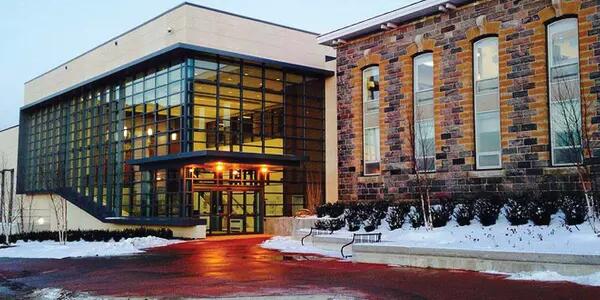During the COVID-19 pandemic
For AMAPCEO members who are required to report to a workplace during the COVID-19 pandemic, an unsafe work environment could include:
- workstations less than two metres apart;
- a workspace layout that does not allow for adequate physical distancing between colleagues (e.g., narrow hallways or elevators);
- inadequate cleaning and sanitizing of shared workstations and equipment, common spaces, or high-touch surfaces (e.g., door handles, push plates, railings, elevator buttons); or
- inadequate provision of hand sanitizer, anti-bacterial wipes, or necessary personal protective equipment (PPE).
More on what to do if you feel your work or work environment is unsafe »
Under the Occupational Health and Safety Act (OHSA), you have the right to refuse to perform unsafe work and to refuse to work in an unsafe work environment.
The OHSA also strictly prohibits the Employer from disciplining you in any way if you relied on your rights under the OHSA to refuse unsafe work.
The right to refuse work does not apply to specified healthcare workers, including those working in (but not limited to):
- laboratories operated by the Crown,
- hospitals,
- residential group homes, or
- ambulance services.
For more details on these exemptions, please see Article 44(2)(b) of the OHSA.
In addition to the OHSA, your Collective Agreement imposes a duty on your Employer to make reasonable provisions for your health and safety. These additional protections are an advantage of being a unionized professional.
First Published: July 2, 2020
Last Updated: March 10, 2021
If you feel your work or work environment is unsafe
If you are facing circumstances that you feel constitute an unsafe work environment, you should report them to your manager immediately.
If the Employer does not act, or if you are still concerned for your safety, you may consider exercising your right to refuse unsafe work.
If you are refusing work because you feel it is unsafe, the OHSA includes specific steps that you must take. There are additional actions that AMAPCEO recommends you take, as well.
First stage
1. Immediately report your refusal to work to your supervisor and explain your concerns.
2. Contact an AMAPCEO Health & Safety Representative in your workplace and advise them of your situation. If your workplace does not have a Health & Safety Representative, contact one in your AMAPCEO District. If you prefer, you could contact an AMAPCEO Workplace Representative about your issue instead of a Health & Safety Representative.
3. Your supervisor must investigate the situation immediately. They must do so with you and a Health & Safety Representative or Workplace Representative present. Remain in a safe place reasonably close to your workstation and be available to your supervisor while they investigate.
4. Once the investigation is complete:
- if you are satisfied that the situation is resolved, you can return to work; or
- if you are still concerned for your safety and wish to continue to refuse the work you consider unsafe, the issue will progress to the second stage.
Second stage
5. If you are not satisfied with the steps taken by your Employer, you may continue to refuse to perform the work.
6. The Employer must contact an inspector at the Ministry of Labour, Training and Skills Development, who will conduct an investigation.
7. While their investigation is underway:
- you must continue to remain in a safe place reasonably close to your workstation and be available to the inspector, and/or
- your Employer may assign you some other safe work or give you other directions.
8. The inspector will make a written decision. If they decide the work is:
- safe, you are expected to return to your work; or
- unsafe, they will issue an order to the Employer to remedy the situation.
Additional information
Another worker can be asked to do the work
While the inspector conducts their investigation, the Employer can ask another worker to do the work you refused. However:
- they must tell that worker that the work was refused, and the reasons why; and
- this must be done in the presence of a worker member of the Joint Health & Safety Committee or an AMAPCEO Workplace Representative.
The role of a certified member of a Joint Health & Safety Committee
In Ontario, most workplaces with 20 or more workers must have a Joint Health & Safety Committee (JHSC), made up of at least one worker member and one employer member.
Under certain circumstances, a trained, certified member of a JHSC can order a “stop work” direction:
- This certified member must believe that “dangerous circumstances” exist and will request that the Employer investigate. Once the investigation is complete, if the certified member believes that the dangerous circumstances still exist, they may ask a second certified member to investigate. In this scenario, one of the certified members must represent workers; the other must represent the Employer.
- If both certified members believe the dangerous circumstances still exist, they can direct the Employer to stop the work or stop the use of any part of the workplace. The Employer must immediately comply with this direction. Only the certified members on the JHSC or an inspector with the Ministry of Labour, Training and Skills Development can cancel the direction.
- If the certified members do not agree that dangerous circumstances exist, either one can request that an inspector with the Ministry investigate.
For Health & Safety Representatives
If you are a Health & Safety Representative and you are concerned about your Employer’s compliance with the Collective Agreement, please contact an AMAPCEO Workplace Representative at Waypoint for assistance.


